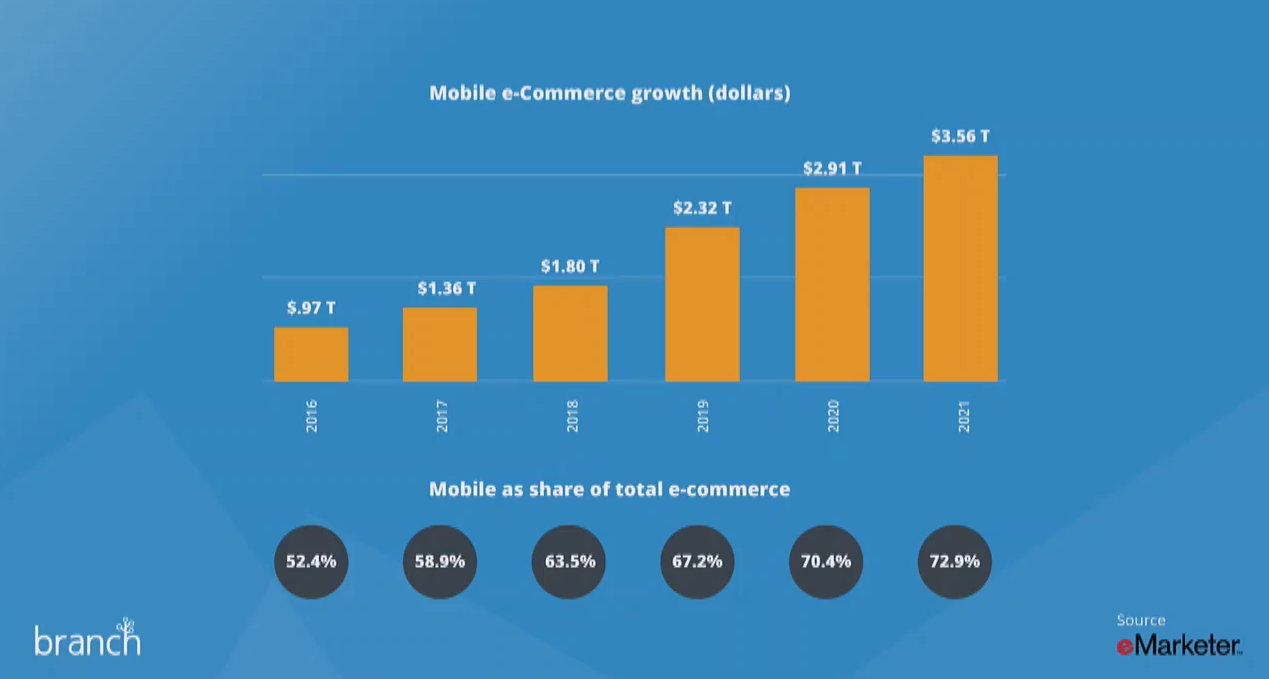It’s that time of year again where we take a look at the top trends that will shape the ecommerce trends in 2020.
One thing that won’t change is the industry’s continued and rapid pace of expansion. The global retail ecommerce industry is projected to grow from US$3.45 billion in 2019 to US$4.13 billion in 2020 – and reach even higher heights in 2021. To capitalize on this substantial growth, online stores need to find a way to stand out and stay on top of ecommerce trends.
And this is a special year: it is the start of a new decade. The next 10 years are going to be dominated by new and exciting technologies like artificial intelligence, augmented reality and 5G which will fundamentally change how consumers shop online.
So let’s take a look at some of the key ecommerce trends in 2020 that will help you to stay relevant, deliver the right value to your customers and provide them with the best service possible.
1. Personalization
Personalization has been a growing trend for ecommerce for several years, and it looks set to continue to dominate as one of the ecommerce trends in 2020. According to Accenture, 33% of customers who end their relationship with a business do so because there is little to no personalization.
But it is no longer good enough to just acknowledge a customer by their name. They want an individual shopping experience tailored to them.
Leveraging your customer data – their buying history, browsing behavior and demographics – can give you key insights for making their ecommerce experience unique.
For example, you can add a ‘you might also like’ section to your cart or search results to display relevant products based on the items in their cart, and their search or purchase history. If a customer abandons their cart, you can send a personalized email to follow up showing the item in the body of the email to remind the customer.

Think how Netflix recommends shows to their customers based on their individual viewing history, their wishlist and whether they gave the content a thumbs up or thumbs down. Ecommerce personalization is the same principle; you have data, so use it to benefit the customer.
2. Privacy
Privacy goes hand-in-hand with personalization. Although customers understand that you will use their data to provide a better experience for customers, they want to know that their information is safe and secure.
And with the enforcement of GDPR (the EU’s data protection regulation) and the California Consumer Privacy Act, ‘privacy by design’ is now fundamental for ecommerce entrepreneurs. It must be considered before – privacy should be the default setting.
Be frank with your customers by not just assuring them that you take good care of their data but actually explaining to them how you do this. The more transparent you are about precise efforts you make to live up to your privacy word, the better, wrote Xenofon Kontargyris, a lawyer specializing in data protection and IT law.
3. One-click check out
In 2020, customers are looking for ways to make online shopping easier and quicker. In fact, 1-Click checkout quickly becoming the norm – which means customers will soon expect it as standard when shopping online.
Convenience is king. Increasingly people want really seamless, simple checkout experiences, Alyssa Cutright, Head of Global Payments at eBay, said at WebSummit 2019.
The good news is that it is convenient for everyone. For the consumer, 1-Click checkout is a quick, easy and efficient way to buy products and services online. For ecommerce retailers, an easier buying experience for the customer means closing more deals. In fact, since introducing their 1-Click checkout, Amazon increased sales by 5%.
Luckily for ecommerce retailers, there are lots of ways to implement it online.
For example, the roll out and adoption of Apple Pay has been enthusiastic. More retailers are accepting it at checkout.
An exciting new startup, Fast, is creating the “world’s fastest login and checkout”, building 1-click login and checkout for the web.
At @fast we are building 1-click login, 1-click checkout and later 1-click data sharing.
You will never need passwords again, never have to manually enter the same personal info again, or call your bank/telco etc.. if you move address or change credit cards.
Join us.
— domm (@domm) December 28, 2019
4. Augmented Reality (AR)
I think AR and AR glasses are going to change the world the same way mobile did, Mada Seghete, Co-founder and Head of Strategy and Market Development at Branch, said at WebSummit 2019.
The growth of AR in ecommerce has been predicted for a long time. Three years ago, Steve Chou at MyWifeQuitHerJob.com said: “I think the future of ecommerce is with VR where you’ll have the ability to examine a product in your hand before making a purchase.”
Apple and Facebook are reportedly set to launch Augmented Reality (AR) glasses in 2023, but AR is already changing how customers shop online.
Shopify recently launched Shopify AR, where online stores can create and embed 3D product models on their website so customers can view the product in augmented reality. Instagram is using Spark AR to enable shoppers to virtually test products before purchasing. You can learn more about it by reading this Pixc blog.
5. Growth of mobile – and apps!
Simplify: mobile is increasingly the way consumers want to interact and pay, particularly the younger generations… that’s where I see a lot of shift in commerce as we go to the future, Alyssa Cutright, Head of Global Payments at eBay, said at WebSummit 2019.
 This graph shows the continuous growth of mobile ecommerce
This graph shows the continuous growth of mobile ecommerce
Mobile ecommerce will grow to almost 75% of total ecommerce by 2021, according to Marketer.
And yet, 53% of mobile users exit a mobile webpage that takes more than three seconds to load, according to Google research.
That means that your mobile web experience should be as seamless and easy to use as it is on a desktop or laptop. You can find some examples of good mobile experience in our Product Page Teardown series.
6. Voice search
Alexa, Siri and ‘OK, Google’ are already changing the way we search for things online – and soon, voice assistants will change the way we shop.
Voice commerce offers a totally hand-free touchpoint in the consumer’s home or even on the shop floor. Now, this is an opportunity for reaching consumers in a simple and convenient way, said Mark Beresford, Director of the Retailer Payments Practice for Edgar, Dunn & Company.
Juniper Research estimates that 8 billion digital voice assistants will be in use by 2023. This is a big jump from the 2.5 billion assistants in use at the end of 2018.
Not only will this impact your search engine optimization, but ecommerce merchants will soon need to start finding ways to advertise on voice.
7. Artificial Intelligence
Artificial intelligence (AI) is everywhere these days – and ecommerce is no exception.
AI can automate the repetitive and time-consuming tasks so you can focus on building your business.
For example, many ecommerce stores already have AI-powered chatbots helping merchants to answer common customer questions, leaving their customer support team with time to answer the tougher and more complex questions.
In June 2019, Shopify announced an AI-powered fulfillment network. The system uses machine learning to predict demand, inventory allocation, and routes orders to the closest fulfillment center. It is currently only available in the USA as ‘early access’ to qualifying small – and medium-sized merchants – but the goal is to expand the service to Shopify stores of all sizes in the future.
8. New payment methods
There is a lot of hype at the moment around cryptocurrency in ecommerce.
But despite the rise of this new payment method, it is unlikely to be a top ecommerce trend in 2020. Although you should keep it in mind for the future.
We will wait and see what our consumers demand in time; I’m not seeing any demand from our customers … that want to pay that way. Alyssa Cutright said.
However, Amazon bought several cryptocurrency-related domain names in 2019, suggesting that they might get into the space in the future. For now, the company is focusing on ensuring that their customers around the world are able to pay in a way that is convenient for them.
Being able to pay in local currencies is much more important for our customers at this moment… than being able to pay in crypto, Amazon’s Chief Technology Officer, Werner Vogels, said at WebSummit 2019.
As we enter the next decade, there are exciting times ahead as the ecommerce industry continues to grow and expand. Implementing these 8 important ecommerce trends will help you make sure that you stay ahead in 2020 – and beyond!








